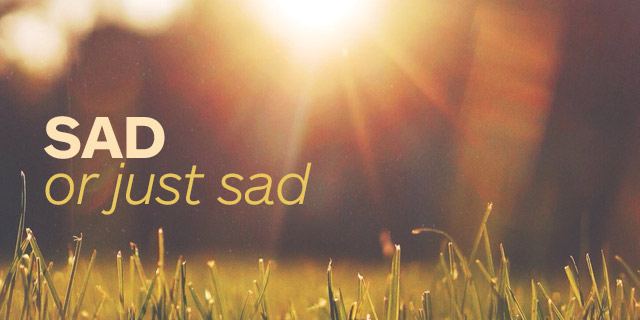Winter Mood Best Practice Tips
Don’t Let Your Low Mood Take Over This Winter
By Bluestone Psychiatric Services
It’s a weird time of the year. The winter holidays are well behind us and the weather seems to be building up its stamina with cold winds, temperatures and icy roads. It can be a difficult time for our moods with shorter daylight and darker evenings.
- Each year, over 10 million Americans experience mild to severe symptoms of seasonal affective disorder (SAD).
 Are there days when you leave for work in the dark and return home in the dark. You may wonder is your low winter mood being impacted? Is it just part of a situational experience or is it more complex like seasonal affective disorder (SAD).
Are there days when you leave for work in the dark and return home in the dark. You may wonder is your low winter mood being impacted? Is it just part of a situational experience or is it more complex like seasonal affective disorder (SAD).
SAD expert Dr. Kelly Rohan defined the disorder as, “a regular seasonal pattern of major depressive episodes during the fall and winter months with periods of full improvement in the spring and summer.”
Maybe at first, it didn’t seem so bad; nothing that binge watching your Netflix show and some well placed sweet treats couldn’t manage. But a few weeks later the mood remains. If this is the case, try a few of some well practiced techniques to make a change.
Five Ways to Change the Seasonal Pattern of Depression
- Find the Light – Sunlight can activate specific vitamins in your system as well as regulate the amount of melatonin in your body, both of which are connected with your moods. If you are able find opportunities, despite the cold or wet, to get outside. Some research suggests the morning light is best, but anytime you can make time to get outside during these short daylight times will help.You can also add full spectrum light to your house. The National Institute of Health recommends a 10000 lux exposure for 30 minutes. (https://www.ncbi.nlm.nih.gov/pmc/articles/PMC3181778/)
- Connect the Dots – Picture the people in your life as dots. Look for chances to connect those dots by making visits to those people. Plan a lunch, take a walk, go to a movie, or get some coffee. The more dots you connect the better your mood picture will be. If you know the winter impacts your mood, have one of your dots (aka friends) hold you accountable to get out and be social.
- Turn Off Auto Pilot – We have trudge along allowing our auto pilot to take the path of least resistance and stimulation. Turn it off and start savoring what is around you. Look for beauty and pleasant moments before they pass you by. Seek thankfulness and be grateful for what you do have then focusing on what you don’t.
- Your Diet Choices – Observe your dietary choices during the winter months. Make a purposeful attempt to minimize carbohydrate-rich, processed, and comfort foods. Eat a variety of fruits and vegetables. Consider adding a dietary supplement that includes Vitamin D can help make up for the lowered levels of sunlight, the source of vitamin D.
- Medication to Soothe the Intensity – supplement the above techniques with psychiatric medicine. Our team of psychiatric medication providers enjoys connecting with people interested in making a change. NIH continues to recommend this approach, “Data emerging from [placebo-controlled] trials has led to the recommendation of the SSRIs sertraline and fluoxetine as first-line treatments of SAD.”

Additional contributions by David A. Morris, LCSW
And https://www.ncbi.nlm.nih.gov/pmc/articles/PMC3181778